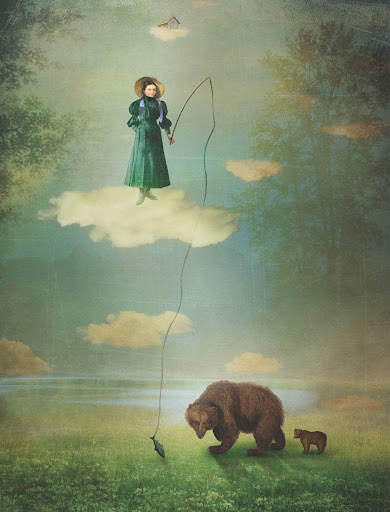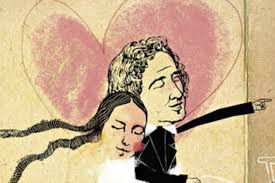Kate Forsyth shares the fascinating story of how Mary Shelley came to write Frankenstein, often called the first science fiction
Most lovers of science fiction would agree that it is a literary genre dominated by men. At least until the 1970s, most science- fiction books were written by men, published by men, and read by men (as well as by a great many spotty-faced teenage boys.).
Brian Aldiss went so far as to describe it as ‘all-male escapist power fantasy’ written by ‘philistine-male-chauvinist pigs’.. Jules Verne is usually named as the Father of Science Fiction, with H.G. Wells and Hugo Gernsback often sharing the honours with him.
Yet if we agree that science fiction is a ‘literary genre that makes imaginative use of scientific knowledge or conjecture’,, science fiction was born more than fifty 50 years before Verne published his first novel; more than ten years before he was even a twinkle in his dad’s eye.
The first science- fiction novel was conceived in the imagination of a young woman, barely more than a girl, one wild and stormy night in June 1816, on the shores of Lake Geneva in Switzerland.
‘How ([did) ] I, then a young girl, come to think of, and to dilate upon, so very hideous an idea?’ she was to write later, when her novel, her ‘hideous progeny’, finally came to be published.
That girl was Mary Wollstonecraft Godwin, and she was only eighteen 18 years old. She had eloped to Europe with her lover, Percy Bysshe Shelley, their illegitimate son, William, and her step-sister, Claire Clairmont, who was having a tempestuous affair with their host, the ‘mad,-bad-and-dangerous-to-know’ poet, Lord George Byron.. A melancholic physician named John Polidori made uprounded out the rest of the house party, staying at the Villa Diodati, which Byron had hired for the summer.
Yet 1816 was to be called ‘Tthe ‘Year Without a Summer’‘. The weather was cold and rainy, the skies gloomy and dark with ash from the eruption of Mount Tambora the previous year. ‘It proved a wet, ungenial summer, and incessant rain often confined us for days to the house,’ Mary recorded in her diary.
There was little to do in during a rainy summer in 1816: no TV or DVDs or internet surfing, no Monopoly or Trivial Pursuit or Twister. The five young people (Byron was the eldest at twenty-eight28) read, wrote poetry, and discussed the news of the day. One day, they discussed experiments by Erasmus Darwin (Charles Darwin’s grandfather), who had managed to make a severed frog’s leg twitch with a charge of electricity.
The house must have been charged with tension, both sexual and psychological.
Sixteen-year- old Mary had known Percy only two months before she had eloped with him, and Percy had abandoned his pregnant wife and baby to be with her. Percy is also thought to have had a few flings with Mary’s younger step-sister, Claire, who had just discovered she was pregnant to Byron.
Byron wrote: ‘That odd-headed girl . . . introduced herself to me shortly before I left England . . . ([then) ] I found her with Shelley and her sister at Geneva— – I never loved her nor pretended to love her— – but a man is a man & if a girl of eighteen comes prancing to you at all hours of the night . . .’
Byron, meanwhile, had himself fled England after the breakdown of his marriage amid rumours of an incestuous affair with his half-sister, Augusta. He was also bi-sexual, and many biographers wonder if whether he was engaged in a homosexual affair with his young and handsome physician, John Polidori, whom he nicknamed ‘Polly Dolly’. John, meanwhile, fell in love with Mary and had challenged Percy to a duel.
One wild, tempestuous night, with rain lashing against the windows, the five sat around the fireplace, taking turns to read ghost stories from a French book called Fantasmagoriana, ou Recueil d’Histoires d’Apparitions de Spectres, Revenans & Fantomes – translated into English as Tales of the Dead. The book had as its epigraph the Latin expression ‘Falsis terroribus implet’, which – roughly translated – means ‘he fills (his breast) with imagined terrors.’.
The uncanny tales so stimulated Byron’s imagination that he challenged the others to see who could write the most spine-chilling tale of horror. They all grabbed quills and ink-pots and set to work. John Polidori’s diary describes the atmosphere of the villa:
‘Began my ghost story after tea. Twelve o’clock, really began to talk ghostly. L.B. repeated some verses of Coleridge’s ‘Christabel’, of the witch’s breast; when silence ensued, and Shelley, suddenly shrieking . . . ran out of the room . . . Threw water in his face, and gave him ether. He was looking at ([Mary) ] and suddenly thought of a woman he had heard of who had eyes instead of nipples, which, taking hold of his mind, horrified him.’
Mary, meanwhile, wrote in her diary:
I busied myself to think of a story – a story to rival those which had excited us to this task. One which would speak to the mysterious fears of our nature, and awaken thrilling horror – one to make the reader dread to look round, to curdle the blood, and quicken the beatings of the heart.
She went to bed late, but:
when I placed my head upon my pillow, I did not sleep, nor could I be said to think . . . I saw – with shut eyes, but acute mental vision – I saw the pale student of unhallowed arts kneeling beside the thing he had put together. I saw the hideous phantasm of a man stretched out, and then, on the working of some powerful engine, show signs of life, and stir with an uneasy, half-vital motion.
She woke the next morning with the story clear in her mind and began writing straightaway.
Mary had assumed she was working on a short story, but the tale of the scientist, Dr Victor Frankenstein, who ‘collected bones from charnel-houses and disturbed, with profane fingers, the tremendous secrets of the human frame’, began to grow larger, just like the monster he creates.
Mary’s diary entries diminish. On 24 July, she says simply: ‘Write my story.’
Mary kept working away at her manuscript for another year, through the trauma of Percy’s wife Harriet’s suicide, the court battle for custody of Percy’s two young children (he was declared morally unfit to have them and they were put into the care of a clergyman), her marriage to Percy three months after Harriet’s death, and the birth of her third child, Clara.
Mary Shelley completed the book in May 1817. Frankenstein; or, The Modern Prometheus was published anonymously on 1 January 1818 by the small publishing house, Harding, Mavor & Jones. It had already been rejected by both Percy’s and Byron’s publishers. Only 500 copies were printed.
Most people assumed that Percy had written it, since he wrote the preface and it had been dedicated to William Godwin, whom Percy was known to admire. Frankenstein was not received well critically, being described by one reviewer as ‘the foulest Toadstool that has yet sprung up from the reeking dunghill of the present times.’
Two months later, Percy and Mary had to flee England because of threats of a debtor’s prison. Within a year, two of Mary’s three children would die in Italy, and Percy would die there himself in 1822. She was left an impoverished widow with a toddler, named Percy for his father.
The second edition of Frankenstein was published on 11 August 1823 following the success of the stage play Presumption; or, the Fate of Frankenstein by Richard Brinsley Peake. This time, Mary was credited as the author. She went on to write many other novels, including Icarus, The Seed of Cain, and The Last Man, the first books to feature ideas of robots, cloning, space travel and an apocalyptic future.
Mary Shelley said of her writing: ‘Life and death appeared to me ideal bounds, which I should first break through, and pour a torrent of light into our dark world.’








